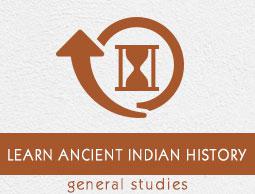Major economic system of Satavahana and other contemporary dynasties was well organized and systematic.
There was all round development in the field of agriculture, industry, and trade during this period.
Agriculture was the main occupation of a large section of the people.
The land was held by the individuals as well as by the state.
The gramakshetra was protected area by fences and field-watchmen against pests like birds and beasts.
Usually, the land holdings were small enough that could be cultivated by the individual family. But sometimes, the land holdings were big enough consisting of up to 1,000 acres.
The land outside the village is called arable land.
Beyond the arable land of the village lay its pastures, which were common for the grazing of cattle. The arid land also belonged to the state.
The forest was located on the boundary of the village.
Kautilya gives a complete scheme of village plan.
Eighteen types of ‘guilds’ were mentioned in the literature.
Guilds became an important institution in the economy.
The guilds implemented and defined rules of work and controlled the quality of the finished product and its prices to safeguard both the artisans and the customers.
The disputes of the guild members were resolved through a guild court.
Guilds also acted as a banker, financier, and a trustee. Such functions were carried out by a different category of merchants known as ‘Sresthies’ in north India and ‘Chettis’ in south India.
Loans were given on security of gold and other things.
Money was lent for interest on promising rates to be renewed every year.
Nasik cave inscription mentioned that the interest rates on money deposited to guilds. The common rate of interest was between 12% and 15% per annum
Both internal and external trade was practiced in most of the parts of India since Mauryan period.
All the internal cities and ports were interconnected with a well-knit road system.
A large number of modern national highways were developed during this period including Grand Trunk road. The same road was further maintained and developed by Sher Shah Suri.
The discovery of monsoon winds in the first century facilitated foreign trade with Egypt as it reduced the distance between the western ports of India to the ports of Alexanderia in Egypt. Now the whole distance could be covered in forty days.
India's trade with Rome also increased enormously by sea as well as by land route, which is generally known as the silk route.
The account of the author of Periplus of Erythean Sea and Roman historians like Pliny and Ptolemy mentioned about the trading commodities.
Indian literature, both in Tamil and Sanskrit mentioned common items of trade were Indian spices, sandalwood, and other variety of woods, pearls, textiles of various types, sea products, metals, semi-precious stones, and animals.
Arikamedu was an important Roman settlement and trading station. It was located close to a port, which was excavated in 1945.
Romans paid for the goods mainly in gold currency.
A number of hordes of Roman coins found in the Deccan and south India indicates the volume of this trade (which was in favor of India).
Pliny, Roman historian mentioned that Indian trade was a serious drain on the wealth of Rome.


